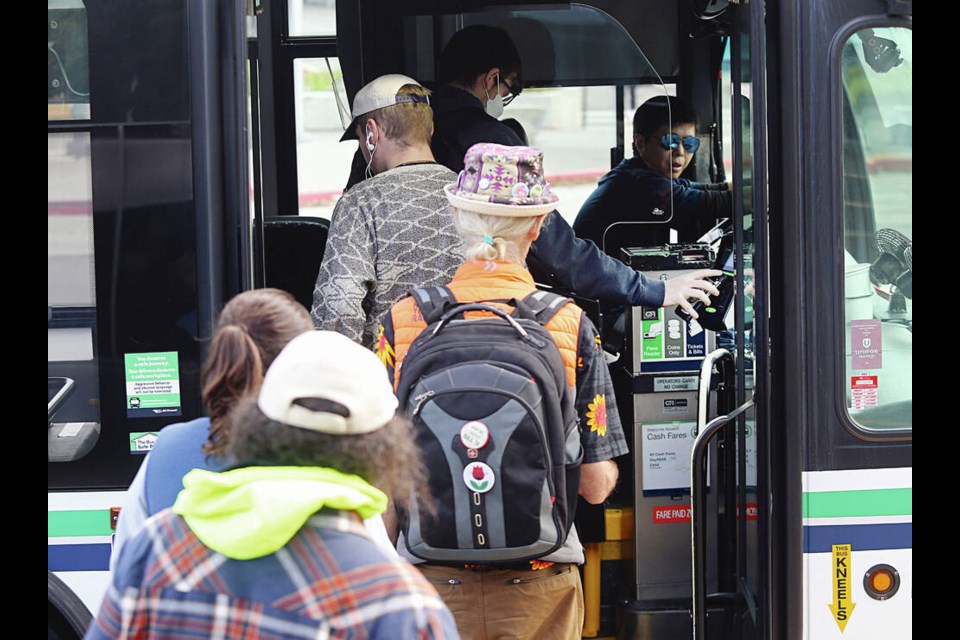B.C. Transit is declaring its new tap-to-ride payment scheme a success with just over 40,000 people adopting the Umo payment system in Greater Victoria since it launched on Aug. 23.
“We are very pleased with Umo adoption rates, rider feedback, and operator feedback thus far,” the transit agency said in a statement.
B.C. Transit plans to launch Umo in the Cowichan area and then Nanaimo later this fall. Information sessions have been held at rec centres and malls in both areas ahead of the launch.
With the Umo system, riders either tap a card or scan a phone app displaying a QR code to pay their fares.
Vancouver Island transit systems are being prioritized in the province-wide rollout of the payment system owned and operated by Cubic Corporation, a California-based transportation and defence company.
The old system, which required exact change, a ticket or a monthly pass, is expected to be phased out, though no date has been set.
Also being phased out is the 10 per cent bulk-purchase discount riders get when they buy a sheet of 10 bus tickets.
B.C. Transit said it’s not planning to offer discounts for people who pay for their rides using the Umo card or app — unlike TransLink’s Compass-card system on the Lower Mainland.
B.C. Transit said it opted not to provide a discount “to avoid creating inequity between riders using Umo and those who choose to or need to pay with cash.”
In the Lower Mainland, TransLink’s tap-to-pay fares are 20 per cent cheaper than cash fares, a carry-over from its old bulk-ticket discount that was discontinued after Compass cards were introduced in 2015.
B.C. Transit said it has no plans to remove fareboxes, which will continue to be used for processing cash payments.
Ryan Windsor, chair of the Victoria Regional Transit Commission, said the rollout has been smooth. “I’ve got a mother-in-law who’s in her 70s and she says it works great and I don’t pay her to say that,” he said with a chuckle.
Windsor said he expects meaningful ridership data from Umo to arrive in 2024, which will help the commission understand ridership trends and determine where to allocate resources.
B.C. Transit said it could not determine the number of riders who continue to use cash, tickets or magstripe monthly passes since the Umo rollout, “due to the antiquated nature of traditional payment methods.”
B.C. Transit announced on Sept. 28 that transit ridership had returned to pre-pandemic levels across all its systems.
Using the Umo fare system
• Umo cards can be picked up for free from 30 locations across the capital region. Go to bctransit.com/victoria/fares and click on the “Where to Buy” tab.
• The Umo app can be used on any B.C. Transit system, but there are separate virtual wallets for each transit system.
• Riders don’t have transfer rights on a single fare, contrary to what is displayed on the app. The daily fare cap is $5 and riders won’t be charged for further rides, B.C. Transit says.
• The 30-day bus pass does not need to start at the beginning of the month and can be used immediately after purchase.
• A data connection or cellular service is not required for the Umo app to function.
• Students with a U-Pass can activate their benefit codes on either the app or the reloadable card. The Umo app wallet balance and card balance are not interchangeable.
• HandyDART buses currently do not use Umo payment systems, although B.C. Transit is considering whether it should be added to the HandyDART system.
• Umo card balances can be checked at ca.umopass.com after the card has been registered. Cards can be topped up through vendors, online or through the Umo call centre at 877-380-8181.



